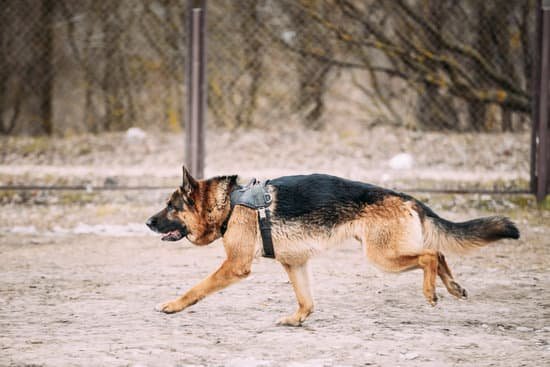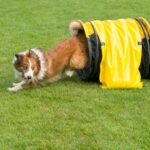Training a deaf and blind dog can be a challenging but incredibly rewarding experience. Understanding the behavior of these special dogs is crucial in developing effective training techniques. Deaf and blind dogs rely heavily on their sense of touch, scent, and the consistent communication signals from their owners to navigate their environment.
One of the biggest challenges in training a deaf and blind dog is the inability to communicate through traditional auditory cues. This requires pet owners to get creative and utilize alternative methods such as touch signals, vibrations, and scents. It’s important to have patience, empathy, and a deep understanding of your dog’s unique needs when embarking on this training journey.
Creating a safe environment for training is essential for the success of both you and your furry companion. By removing potential hazards and providing consistent cues in a controlled setting, you can help your deaf and blind dog feel secure and confident during training sessions. Utilizing positive reinforcement techniques and celebrating small victories are key components in building trust and bonding with your special pet.
Challenges of Training a Deaf and Blind Dog
Training a deaf and blind dog can present unique challenges due to their limitations in sight and hearing. It’s important to understand that these dogs rely heavily on their sense of smell, touch, and their ability to pick up on subtle vibrations. When embarking on the journey of training a deaf and blind dog, it’s crucial to be patient, understanding, and willing to adapt your training methods to suit their specific needs.
One of the main challenges of training a deaf and blind dog is communication. Without the ability to speak or hear commands, traditional verbal cues are ineffective. This is where utilizing touch and scent become essential in helping these dogs understand what is expected of them. Incorporating tactile signals, such as gentle touches or taps on different parts of their body, can serve as cues for various commands or behaviors.
Creating a safe environment for training is another significant challenge when working with a deaf and blind dog. Removing any potential hazards or obstacles from their surroundings is crucial to prevent accidents or injuries during training sessions. Additionally, establishing clear boundaries within the training area can help these dogs navigate their environment more confidently. By providing a secure space free of distractions, you can set your deaf and blind dog up for success in their training journey.
- Understand the limitations in sight and hearing
- Utilize touch and scent as communication tools
- Create a safe environment for training
Creating a Safe Environment for Training
Training a deaf and blind dog can be a challenging yet rewarding experience. One of the key components to successful training is creating a safe environment for your canine companion. Ensuring that the training area is free from hazards, clutter, and distractions is essential when working with a dog who relies heavily on their other senses to navigate the world. A clear and unobstructed space will help your dog focus on you and the training tasks at hand.
In addition to physical safety, it is also important to consider your deaf and blind dog’s emotional well-being during training sessions. Providing a calm and supportive atmosphere can help reduce any anxiety or stress your dog may feel while learning new behaviors. Remember to have patience, understanding, and compassion as you guide your furry friend through the training process.
Creating a safe environment also involves using consistent cues and signals to communicate with your deaf and blind dog effectively. Employing tactile cues, such as gentle touches or vibrations, can help your dog understand what is expected of them during training exercises.
Using positive reinforcement techniques in a safe and encouraging environment will not only help build trust between you and your dog but also make the training experience more enjoyable for both of you. With dedication, patience, and the right approach, you can successfully train a deaf and blind dog in a safe and supportive environment.
Utilizing Touch and Scent in Training
Training a deaf and blind dog can be a unique and rewarding experience, but it also comes with its challenges. One of the key aspects of training these special dogs is utilizing touch and scent to communicate with them effectively. Since they cannot rely on verbal commands or visual cues, incorporating touch and scent into their training can help them understand what is expected of them.
When working with a deaf and blind dog, using touch to guide them physically can be very helpful. For example, gently touching their side or back can let them know which direction to move in or where to go. You can also use touch to praise and reassure them when they are doing something correctly.
Additionally, incorporating scents into their training can provide important information about their surroundings and what is expected of them. For example, you can use different scents to mark specific areas for different tasks or behaviors.
It is important to be patient and consistent when using touch and scent in training a deaf and blind dog. They rely heavily on these senses to navigate the world around them, so clear communication through touch and scent cues is vital for their understanding.
By establishing a routine that incorporates these sensory cues, you can help your dog learn new behaviors effectively and strengthen your bond with them in the process. By utilizing touch and scent in training, you can create a safe environment for your deaf and blind dog to thrive and learn new skills confidently.
Importance of Consistent Communication Signals
Deaf and blind dogs rely heavily on their sense of touch and smell to navigate the world around them. When it comes to training these special dogs, consistent communication signals are crucial in helping them understand what is expected of them. Without the ability to hear commands or see hand signals, these dogs need clear and reliable cues to guide them through training sessions.
Here are some ways you can establish consistent communication signals when training a deaf and blind dog:
- Use tactile cues: Since your dog cannot hear verbal commands, use touch as a way to communicate with them during training. For example, gently tapping their shoulder could signal them to sit.
- Implement repetitive motions: Consistency is key when working with a deaf and blind dog. Use the same hand gestures or body movements each time you give a command, so they can learn to associate the cue with the desired behavior.
- Utilize scent cues: Dogs have an incredible sense of smell, so incorporating scent cues along with tactile and repetitive gestures can enhance their understanding during training sessions.
By establishing clear and consistent communication signals, you can help your deaf and blind dog feel more secure and confident during training. Remember that patience and persistence are essential when teaching these special dogs new commands and behaviors. With dedication and understanding, you can build a strong bond with your furry companion while helping them navigate their world successfully.
With gradual progress and small achievements along the way, celebrating these victories will not only boost your dog’s confidence but also strengthen the trust between you both. By focusing on positive reinforcement techniques tailored to their specific needs, you can create a loving environment where your deaf and blind dog can thrive in learning new skills and behaviors.
Positive Reinforcement Techniques for Deaf and Blind Dogs
Deaf and blind dogs require a different approach to training compared to dogs with normal senses. Positive reinforcement techniques are particularly effective in teaching these special dogs. Since they heavily rely on touch, scent, and consistent signals for communication, positive reinforcement can help reinforce desired behaviors effectively. For example, using treats or toys to reward your dog when they respond correctly to commands can make the training process more successful.
One important aspect of positive reinforcement techniques for deaf and blind dogs is the use of tactile signals. By associating specific touches or gentle cues with certain commands or actions, you can effectively communicate with your furry companion. For instance, a light touch on their back followed by a treat can signal that they have performed the desired behavior correctly. This method not only helps in reinforcing good behavior but also strengthens the bond between you and your dog.
Consistency is key when implementing positive reinforcement techniques for deaf and blind dogs. It is crucial to maintain a consistent training schedule and use the same signals each time to avoid confusion. Dogs thrive on routine, especially those with sensory impairments, as it provides them with predictability and structure. By being patient, persistent, and using positive reinforcement consistently, you can effectively train your deaf and blind dog while strengthening your relationship with them.
| Positive Reinforcement Techniques | Deaf and Blind Dog Training |
|---|---|
| Use of treats or toys as rewards | Effective in reinforcing desired behaviors |
| Tactile signals for communication | Strengthens bond between owner and dog |
| Consistent training schedule | Crucial for predictability and structure |
Developing a Routine Training Schedule
Setting Specific Times for Training Sessions
When training a deaf and blind dog, it is important to set specific times for training sessions to ensure that they are focused and alert. Choose times of the day when your dog is most awake and receptive to learning.
This could be after mealtime or during their playtime when they are naturally more energetic. By sticking to a consistent schedule, you can help your dog associate certain times with training, making it easier for them to understand when it’s time to focus and learn.
Incorporating Short but Effective Training Sessions
Since deaf and blind dogs rely heavily on touch, scent, and body language cues, it is crucial to keep training sessions short but effective. These sessions should be engaging and interactive, focusing on one command at a time and providing plenty of positive reinforcement.
By keeping the sessions brief yet impactful, you can prevent your dog from becoming overwhelmed or losing interest while still making progress in their training. Remember, patience is key when working with special needs dogs like deaf and blind ones.
Monitoring Progress and Making Adjustments
As you develop a routine training schedule for your deaf and blind dog, it is important to monitor their progress closely and make adjustments as needed. Pay attention to how your dog responds to different commands, cues, or rewards during training sessions.
If you notice that certain techniques are not working effectively or if your dog seems stressed or disinterested, don’t hesitate to switch things up and try new approaches. Every dog is unique, so finding what works best for your furry companion will require patience, observation, and adaptability on your part as their trainer.
Seeking Professional Help and Resources
Training a deaf and blind dog can present unique challenges that may require professional guidance. It is essential to seek the help of veterinarians, animal behaviorists, or trainers who have experience working with dogs that have sensory impairments. These professionals can provide valuable insight into the specific needs of your deaf and blind dog and offer tailored training strategies to address those needs effectively.
One important aspect of seeking professional help is to ensure that you are working with individuals who use positive reinforcement techniques in their training methods. Positive reinforcement focuses on rewarding desired behaviors rather than punishing unwanted ones, which has been proven to be more effective, especially for dogs with sensory impairments. By working with professionals who focus on positive reinforcement, you can create a supportive training environment that fosters trust and confidence in your deaf and blind dog.
In addition to seeking professional help, there are resources available online and in books that provide guidance on how to train a deaf and blind dog. These resources often include step-by-step training exercises, tips for building communication signals, and advice on creating a safe training environment. By utilizing these resources in conjunction with professional guidance, you can develop a comprehensive training plan that meets the specific needs of your deaf and blind dog.
| Professional Help | Online Resources |
|---|---|
| Veterinarians | Websites with Training Guides |
| Animal Behaviorists | Books on Deaf-Blind Dog Training |
| Experienced Trainers | Forums for Support from Other Owners |
Celebrating Small Victories in Training
Deaf and blind dogs face unique challenges when it comes to training. Celebrating small victories throughout the training process is essential for both you and your furry companion. Each success, no matter how minor, represents progress and a step forward in building trust and communication with your deaf and blind dog.
Recognizing Progress
Training a deaf and blind dog requires patience, consistency, and creativity. It’s important to acknowledge the milestones achieved during the training sessions. Whether it’s responding to a touch cue or successfully navigating an obstacle course, these moments of success should be celebrated. By recognizing progress, you can motivate both yourself and your dog to continue working towards their training goals.
Positive Reinforcement
Using positive reinforcement techniques is key to celebrating small victories in training. Rewards such as treats, verbal praise, or a favorite toy can serve as effective motivators for deaf and blind dogs. When your dog successfully follows a command or demonstrates a desired behavior, make sure to reward them immediately to reinforce that behavior positively. This not only encourages them to continue learning but also strengthens the bond between you and your furry friend.
Staying Patient and Persistent
Training a deaf and blind dog may take longer than training a dog with their full sensory capabilities. It’s crucial to remain patient and persistent throughout the process. Remember that every small achievement is a step in the right direction towards successful training. By staying committed to celebrating these victories, you are not only helping your dog learn new skills but also creating a strong foundation for an enduring bond based on trust and understanding.
Building Trust and Bonding With Your Deaf and Blind Dog
Training a deaf and blind dog requires patience, understanding, and creativity. It can be challenging to communicate with a dog who cannot see or hear, but with the right techniques and consistent effort, significant progress can be made. Building trust and bonding with your deaf and blind dog is crucial in creating a strong foundation for training and overall well-being.
One of the key aspects of training a deaf and blind dog is understanding their behavior. Deaf and blind dogs rely heavily on their sense of touch and smell to navigate the world around them. By learning to read their body language and respond accordingly, you can establish a deeper connection with your furry companion. Recognizing their unique needs and limitations will help tailor your training approach to suit their individual requirements.
Creating a safe environment for training is essential when working with a deaf and blind dog. Removing any potential hazards or obstacles from their surroundings will not only prevent accidents but also build trust as they learn to rely on you for guidance. Utilizing touch and scent cues in training, along with consistent communication signals, can help bridge the gap in verbal commands.
Using positive reinforcement techniques and celebrating small victories along the way will boost your dog’s confidence and motivation to learn. Seeking professional help and resources from experienced trainers or veterinarians specializing in deaf-blind dogs can provide valuable support in overcoming challenges in the training process. By investing time, effort, and love into building trust and bonding with your deaf-blind dog, you can create a fulfilling relationship based on mutual understanding and respect.
Frequently Asked Questions
Can a Deaf and Blind Dog Be Trained?
Training a deaf and blind dog requires a different approach compared to dogs with normal senses. Through touch, smell, and positive reinforcement, it is possible to teach them commands and tricks. Patience, consistency, and creativity are key in training these special needs dogs.
Can a Dog Be Happy Blind and Deaf?
Dogs can adapt remarkably well to blindness and deafness with proper care and support from their owners. They can still experience happiness through physical touch, familiar scents, tasty treats, and engaging toys. Maintaining a routine and safe environment can help blind and deaf dogs lead fulfilling lives.
Can a Blind and Deaf Dog Survive?
While being blind and deaf presents unique challenges for a dog in terms of communication and navigation, they can survive with the right care. Owners need to ensure their living space is safe and free of hazards. Regular vet check-ups, proper nutrition, mental stimulation, and love are crucial for the well-being of blind and deaf dogs.

Welcome to the blog! I am a professional dog trainer and have been working with dogs for many years. In this blog, I will be discussing various topics related to dog training, including tips, tricks, and advice. I hope you find this information helpful and informative. Thanks for reading!





